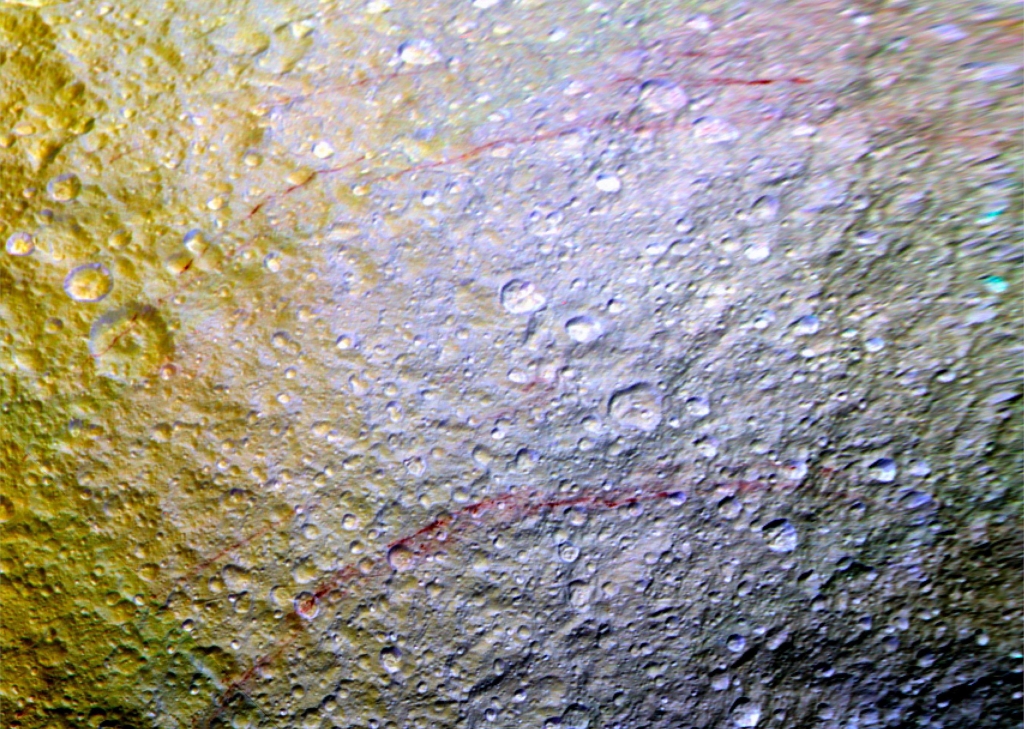-
Tips for becoming a good boxer - November 6, 2020
-
7 expert tips for making your hens night a memorable one - November 6, 2020
-
5 reasons to host your Christmas party on a cruise boat - November 6, 2020
-
What to do when you’re charged with a crime - November 6, 2020
-
Should you get one or multiple dogs? Here’s all you need to know - November 3, 2020
-
A Guide: How to Build Your Very Own Magic Mirror - February 14, 2019
-
Our Top Inspirational Baseball Stars - November 24, 2018
-
Five Tech Tools That Will Help You Turn Your Blog into a Business - November 24, 2018
-
How to Indulge on Vacation without Expanding Your Waist - November 9, 2018
-
5 Strategies for Businesses to Appeal to Today’s Increasingly Mobile-Crazed Customers - November 9, 2018
Mysterious Red Arcs Found on Saturn’s Icy Moon Tethys
The origin of the features and their reddish color is a mystery to scientists with the Cassini mission. “If the stain is only a thin, colored veneer on the icy soil, exposure to the space environment at Tethys’ surface might eras them on relatively short time scales”. They cut through older features on the surface like craters, but nobody has figured out a way to determine their age just yet.
Advertisement
The red arcs are narrow, curved lines on the moon’s surface.
This is also the first time any such phenomenon has been discovered on Saturn’s moons.
Apart from Jupiter’s coveted moon Europa, the reddish features on show here are very rare in the Saturn system. “Here, the giant impact basin Odysseus on Saturn’s moon Tethys stands out brightly from the rest of the illuminated icy crescent”, NASA commented in a recent statement. A version with standard image processing is available, along with a strongly enhanced version. They had to combine various images taken with different green, clear, UV and IR spectral filters in order for the unusual forms to be observed.
Launched in 1997, the Cassini mission arrived in the Saturn system in 2004 where it has been working ever since to study the gas giant and its dozens of moons.
Reported by the Cassini team, the white comes from ice particles freshly deposited on the leading hemisphere of the moon as it sweeps through Saturn’s diffuse E-ring, while the yellow is due to Saturn’s radiation belt bombarding the trailing hemisphere and causing chemical reactions with the surface ice. The area of Tethys shown here is centered on 30 degrees north latitude, 187 degrees west longitude, and measures 305 by 258 miles (490 by 415 km) across.
While it is possible that these red bands are more common on Tethys than we realize, and they are simply covered over fairly quickly by ice deposited on the surface, closer, higher-resolution images scheduled for later this year may tell us more. The original color images were obtained at a resolution of about 2,300 feet (700 meters) per pixel on April 11, 2015.
This enhanced-color mosaic of Tethys shows a range of features including mysterious arc-shaped streaks.
Advertisement
“After 11 years in orbit, Cassini continues to make surprising discoveries,” Linda Spilker, Cassini project scientist at NASA’s Jet Propulsion Laboratory in Pasadena, Calif., said in the release.




























